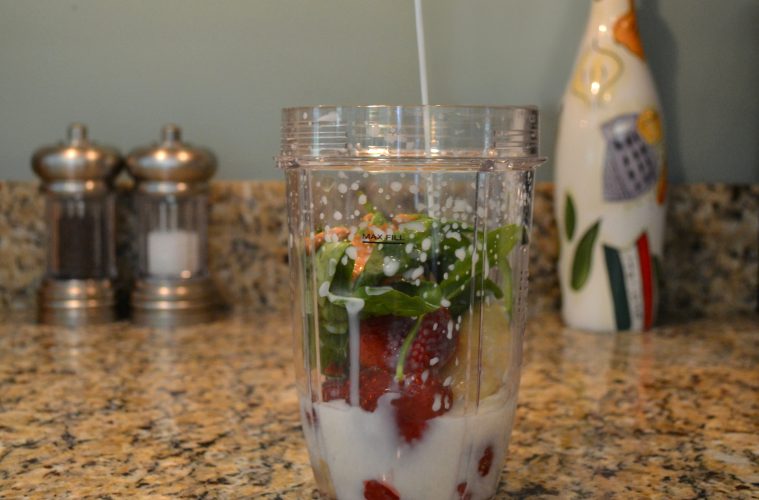The smoothie fad that’s popped up over the last few years is no longer just a fad—it seems like it’s here to stay. The benefits? Smoothies are a great source of fruits and veggies, they’re filling, and they’re portable. In the summertime, when it’s too hot to do anything other than to throw a few frozen fruits in a blender and drink your lunch, smoothies have your back.
For a quick, easy (and healthy!) breakfast or lunch, here are some tips on the best ingredients to blend up from Eat Well Kitchen, a local smoothie joint/cafe here on the North Shore that we love. Don’t feel like doing the dishes this afternoon? Head over to the shop in person to grab your favorite frozen drink.
Just like building a new shed or giving yourself the perfect manicure, you can’t start without a good base. Our local smoothie bar’s best picks are coconut water, coconut milk, and almond milk. Choose versions of these products that are unsweetened to reduce calorie count. Juice isn’t usually a top option because “juices like OJ add a lot of sugar, and there’s usually enough from the fruit already,” says Eat Well Kitchen owner Susan Bergeron.
When it comes to the question of which fruits and vegetables to use, there’s no wrong answer. Use what you like: mangos, bananas, berries, peaches, pineapples, melons, cucumbers, beets—the produce aisle is your oyster! To achieve the right texture for your smoothie, the secret is freezing the fruits and vegetables rather than blending fresh produce and ice. Frozen produce will give the smoothie a nice thickness, and it won’t be watered down. Freeze your produce at the peak of its ripeness, and keep it stored in the freezer until whenever you’re ready to use it.
If you so choose, use your smoothie as a vessel for superfoods: protein powder, chia and flax seeds, matcha, kale, or spinach. “Use a plant based protein powder,” says Bergeron, so it’ll have no whey or animal products. Chia and flax seeds are a source of omega-3, which helps regulate metabolism, reduce inflammation, and improve heart and brain health. Matcha also helps to boost metabolism, and it “offers a bit of a caffeine boost,” says Bergeron. Adding kale or spinach to your smoothie is one of the easiest ways to get some cholesterol lowering, blood pressure reducing, good-for-your-digestive-health fiber into your diet.
Armed with knowledge of the right ingredients and tips to make a killer frozen drink, make this summer one of leafy greens, healthy proteins, strawberries and bananas, and portable, refreshing breakfasts and lunches.

